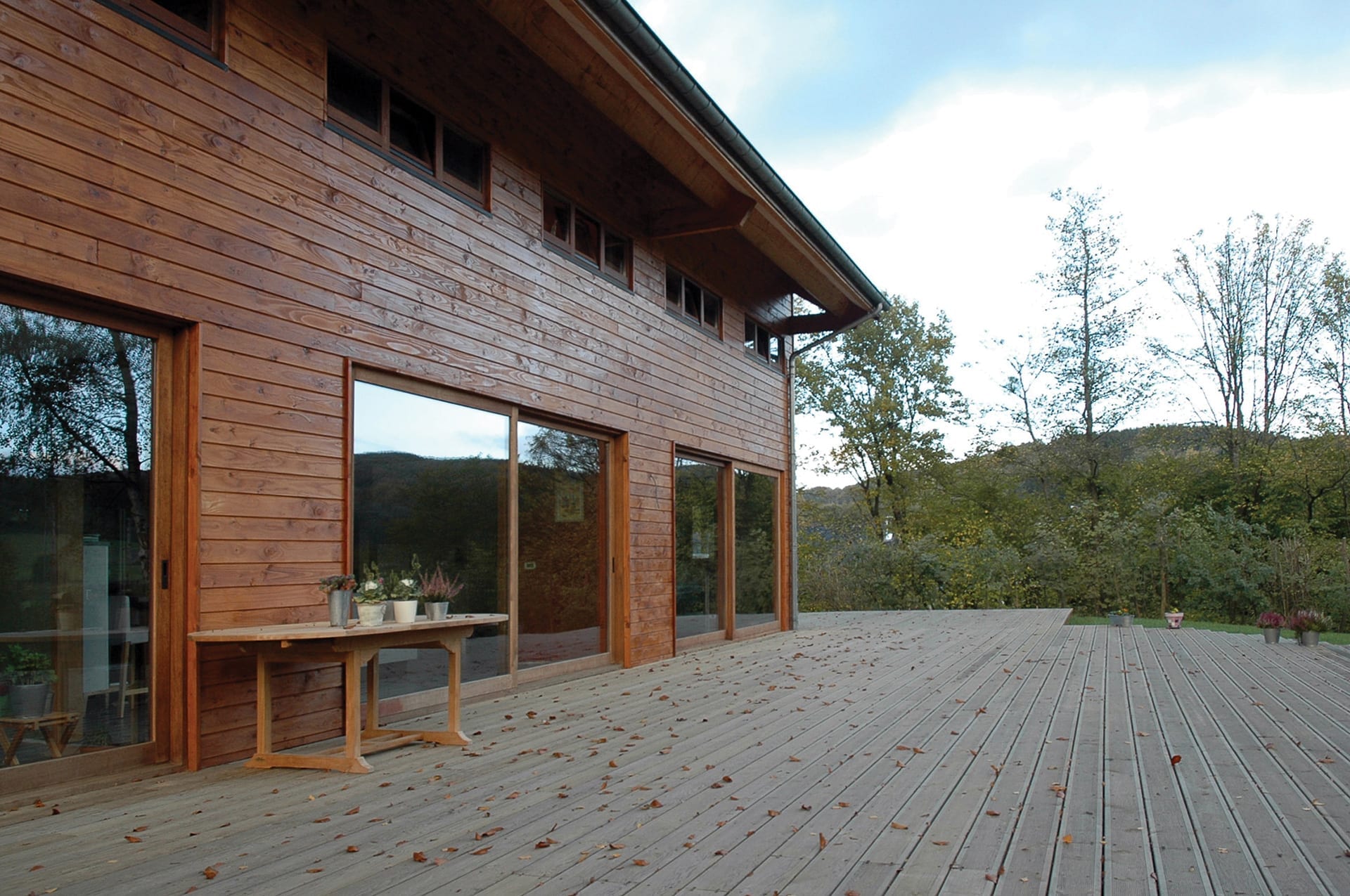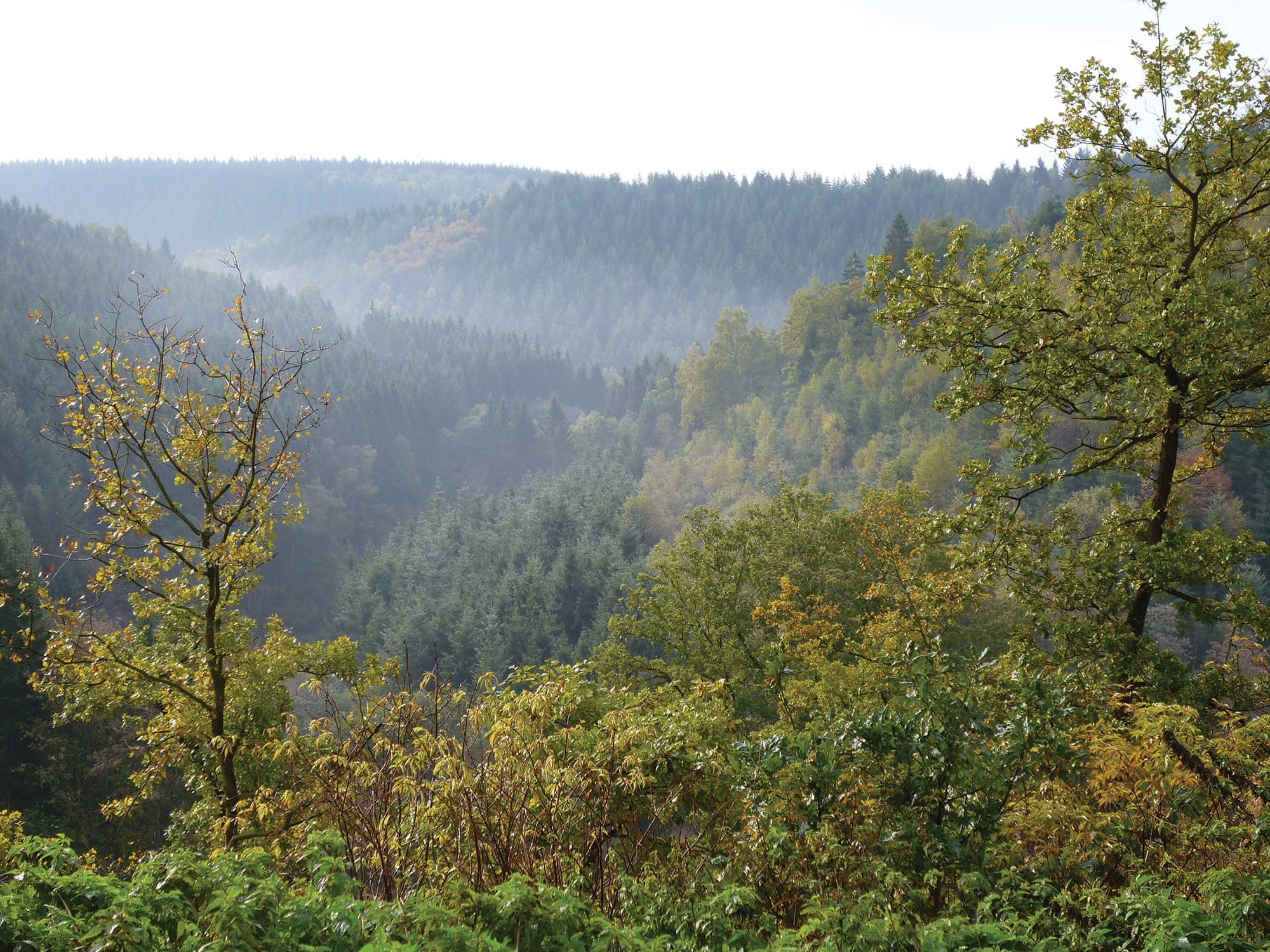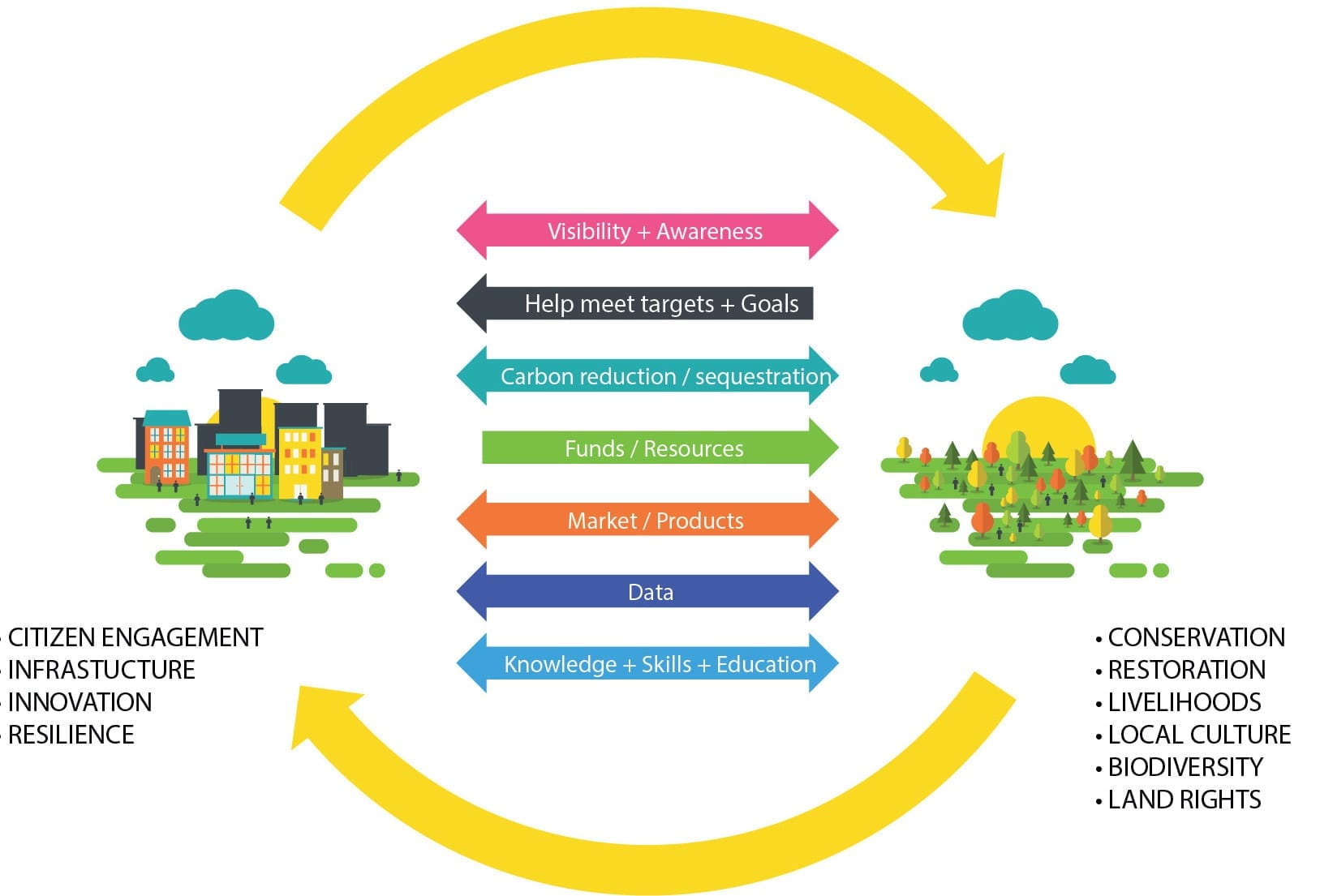Certified Wood for Greener Cities
Can we dream of Green Cities: towns and municipalities where wood is the main material used for construction? We believe we can. Wood has attracted enormous attention in recent years, not least because of rising ecological awareness. Urban populations have grown and will continue to grow, so we need to look for solutions with the smallest possible ecological footprint. Using wood as a building material is definitely one of those solutions. Labelled wood guarantees that the wood originated from forests managed sustainably.
Wood: an Ecological Product
Wood is an exceptionally environment-friendly material according to the Life Cycle Analysis. This is a technique for assessing the environmental and nature impacts associated with all stages of a material’s life. At every stage wood gets very high scores. During its production, extraction, destruction, processing, usage and recycling wood has a great deal of respect for Earth. When trees are harvested for industrial use – in the construction sector, for example – the CO2 stored during the growth of trees can remain stored for a long time in the wood used as a product.
The future: green cities
Today, just over half of us live in cities and that number is predicted to grow to 75% over the next 20 years. This means that some three billion people will need a new home over that period. In addition, there are an estimated one billion people in the world living in slums and some 100 million. The opportunity is therefore not only to build these homes, but to do so in a way that results in the lowest footprint possible. Sustainable timber therefore sits at the heart of tomorrow’s construction industry. As well as having the lowest embodied CO2 of any commercially available building material, it is increasingly seen as the simple and straightforward way to achieve a high- performance building solution.
Advantages of wood in constructions
Building with wood has numerous advantages, no matter whether you use it for indoor panelling, carcase work or outdoor finishing. Check out below some of the benefits.
Wood in buildings is healthy
Wood is popular in buildings. It has a positive influence on the indoor climate and thus also on the well-being and health of the people who live or work in the building. What’s more, wood is an excellent heat and humidity regulator. Walls made of wood breathe; they control the humidity of the surroundings.
Wood allows creative designs
Wood is strong, flexible and attractive, and because it is a relatively lightweight material it is easy to work, process and finish. It is a material ideally suited to creative and innovative designs. Wood is suitable for all architectural applications and allows a huge choice of outdoor panelling, stone, brick and of course outdoor woodwork. Moreover, every piece of wood has its own particular characteristics, because it is unique in terms of its grain, colour and lines. Architects who design a home made of wood can give free rein to their creativity and fulfil even better the wishes of the prospective builder.

Wood enables fast construction
A homemade of wood is lighter than one made of conventional materials, so you can have smaller and simpler foundations, which means they are easier to build. Numerous elements manufactured in workshops simply need to be put together on the building site. This rapid construction makes it possible to deliver a windtight and watertight skeleton in just a few days. Additionally, you do not have to delay finishing until the sub-flooring and brickwork are dry. And given the precision of joiners, the frameworks can be ordered in advance, which saves an awful lot of time.
CLT: an amazing development
One of the most amazing developments is cross laminated timber (CLT). CLT is an engineered wood panel typically consisting of three, five, or seven layers of dimension timber oriented at right angles to one another, and then glued to form structural panels. This gives it exceptional strength, dimensional stability and rigidity. It is lightweight compared to other materials, and is well suited to floors, walls and roofs. In the interior of buildings it can be left exposed providing additional aesthetic attributes. As the panels are prefabricated building components, this can help speed up construction practices and allows for off-site construction.
Wood with a Sustainable Origin
Forest certification allows forest managers to demonstrate that the practices they apply in the forest today are sustainable and that their forests meet both our needs and those of future generations. Certification systems such as the Programme for the Endorsement of Forest certification (PEFC – see xxxx) offer assurance to the consumer that the timber and wood-based products they buy come from forests that are managed sustainably according to exacting international standards. To ensure the reliability of such systems, regular controls are made by independent certification bodies.

An increasing number of building projects are now opting for certified timber, and both public authorities and private companies are choosing to work with wood and paper with a sustainable origin, through their (Corporate) Social Responsibility policies.
The C40-F40 Project
With their high concentrations of people, influence and consumption, megacities have an enormous impact on climate change. C40, a powerful network of megacities committed to combating climate change by reducing carbon emissions through changes to local policy and physical infrastructure, proposes with the C40-F40 project to link the largest and most influential cities with the world’s most socially and ecologically important forests.

Through the 2017 PEFC Collaboration Fund, PEFC is providing financial support for the pilot phase of this project. The project will create links between 10 global cities and forest communities, leveraging urban resources and consumer power to support (financially and culturally) community- and family-based sustainable forest management. Each participating city will select a distinct forest area as a partner. Certified sustainable forest management would be a requirement, whether pre-existing, or something that the city helps the forest managers to obtain. This partnership may take the form of using sustainably- sourced wood from the forest in a visible city landmark; using other non-timber forest products in the city in a sustained and creative way; or creating other forest opportunities such as ecotourism.
For example, the wooden boardwalk of the world famous Brooklyn Bridge in New York will soon need replacing. The project partners propose an innovative partnership between the people of New York City and a sustainably managed community forest in Guatemala. New Yorkers can contribute by sponsoring the individual wooden planks that will make up the new boardwalk, while the local people managing the forest will get
the financial support they need to protect the forest.
Most importantly, C40b cities will become long-term champions of the world’s most important forests and their peoples, modelling a new type of proactive and cooperative globalization.
The Programme for the Endorsement of Forest Certification (PEFC) is an international non-profit, non-governmental organization dedicated to promoting sustainable forest management through independent third-party certification.
It works throughout the forest supply chain to promote good practices in the forest and to ensure that timber and non-timber forest products are sourced with respect for the highest ecological, social and ethical standards. Today, PEFC has recognized certification systems in over 46 countries. Together, these account for over 300 million hectares of certified forest (which represents 2/3 of all certified forest area worldwide), making it the world’s largest forest certification system. Visit: www.pefc.org.